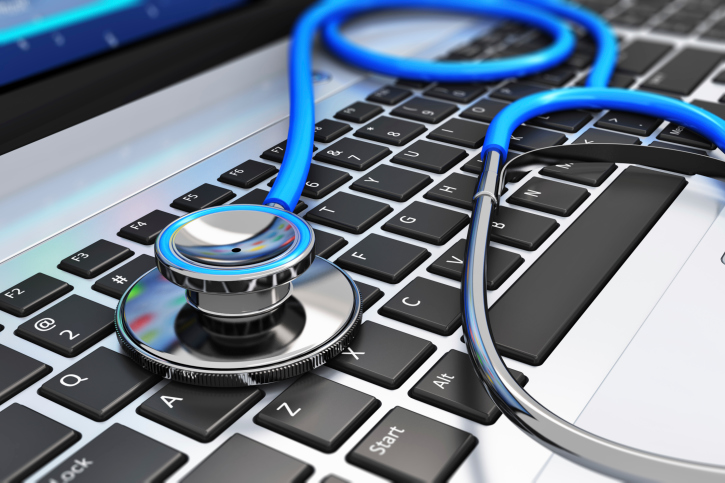Increasingly, healthcare IT professionals turn to real-time location solutions (RTLS) technology as demand for resource and process accountability grows. RTLS impacts safety, quality, and patient outcomes while enabling leaders to develop actionable insights from data. However, healthcare advisors face barriers to implementation, from determining their return on investment (ROI) to addressing cybersecurity concerns.
Through a neutral third party, Cox Communications interviewed US-based healthcare IT leaders with experience planning, buying, and maintaining RTLS systems. The Real-Time Location Solutions (RTLS) System Innovation Study revealed five key advantages of implementing and standardizing RTLS. Below healthcare advisors share top insights and expert advice for leveraging RTLS benefits.
| To learn more about Cox Prosight real-time location solutions, visit us online at Cox Prosight.com Learn More |
5 Benefits of Investing in Real-Time Location Solutions (RTLS)
RTLS refers to the technology used to detect the current geolocation of an asset or person. Internet of Things (IoT) products may have embedded RTLS technologies, or you can add tags to equipment, like an infusion pump or wheelchair. It emits signals to software readers using various technologies, such as Radio-Frequency Identification (RFID), a Global Positioning System (GPS), Wi-Fi, Bluetooth, and Ultrawideband.
Healthcare leaders invest in RTLS to gather data to identify usage trends, forecast equipment needs, and optimize staff and patient safety. Additionally, RTLS integrates with existing IoT devices and internal systems, allowing healthcare leaders to enhance insights. Here are the top benefits, according to healthcare advisors.
1. Boost Security for the Internet of Things (IoT) Network
Attacks on critical healthcare infrastructure plague organizations, and each of our interviewed advisors referenced cybersecurity as a pressing issue. Cybercriminals shut down major systems and hold data for ransom, posing a significant risk to patients and providers.
Fortunately, 50% of surveyed leaders believe RTLS addresses IoT security, and an equal percentage use or are interested in Bluetooth Low Energy (BLE) for security. But they said there’s a greater risk of failure when leaders add new RTLS to the network without completing infrastructure assessments and updates.
IT leaders can circumvent security threats with a thorough site review and optimal wireless network capacity. A site evaluation identifies network gaps due to various issues, including the age and location of the facility. Older buildings may cause sensor triangulation accuracy errors, whereas urban areas may experience higher field interference with RTLS devices. Understanding a facility’s limitations and standardizing network systems improves the success rates of RTLS implementation.
Moreover, leaders should ascertain liability before signing an RTLS contract and integrating existing tools and devices. Most medical devices are Healthcare Internet of Things (HIoT) compatible. Indeed, 40% of respondents integrate RTLS with their existing Electronic Health Record (EHR) system, and leaders want compatible BLE devices.
2. Gain Visibility Into Asset Usage
Every surveyed healthcare advisor uses RTLS systems to track mobile and fixed assets, and half of them use it for patient tracking, including throughput and transport. Along with improving security and reducing losses, leaders leverage data to improve internal processes for usage and distribution. For example, one healthcare leader shaved nine minutes off stretch and wheelchair transport times using asset tags.
Healthcare advisors use RTLS to:
- Automate reminders for cleaning, repair, and preventative maintenance
- Inform daily team meetings and prioritize tasks
- Receive notification if temperatures drop in refrigerators or a door is left open
- Deploy environmental services (EVS) for patient room and bathroom cleaning
3. Supports Priority-Based Budgeting
Healthcare leaders must address cost containment issues and establish the expected ROI of RTLS products and solutions early in decision-making. Doing so involves engaging C-Suite professionals and teams across the healthcare system, including patient experience and materials management staff.
RTLS provides many ways to realize savings across organizations. For instance, 70% of advisors use RTLS to monitor refrigeration and prevent valuable vaccine or tissue losses. Asset tracking also supports loss prevention allowing faculty managers to track everything from wheelchairs to mobile EKG machines.
The top ways healthcare advisors achieve budget goals using RTLS include:
- 80% of leaders said RTLS controls costs by monitoring equipment in real-time
- 40% use Periodic Automatic Replenishment (PAR) level monitoring to contain costs
- 20% leverage RTLS to help with patient throughput
- 30% reduce costs through RTLS-based preventive maintenance monitoring
Surveyed advisors recommend system standardization, allowing organizations to benefit from enterprise-level pricing, regulatory compliance, and consistent support. RTLS vendors provide decision support for leaders with a five-year financial cycle for software, hardware, and maintenance. In addition, they help IT professionals establish a two to three-year ROI window.
RTLS providers may offer inclusive per-unit pricing models which allow for predictable pricing that covers installation, server configuration, maintenance, and annual battery replacement. Health companies benefit from close partnerships with RTLS vendors, giving them access to 24/7/365 support with technicians that are familiar with their facility.
4. Improve Data Efficiency
Flexible, scalable RTLS systems simplify data management and help healthcare leaders draw insights. One out of five healthcare leaders use RTLS for process improvement, and 40% gather data for risk analysis and operations management. However, organizations must monitor and update core data for wayfinding applications and asset tracking. Moreover, they must ensure consistent results, understand various data sets, and be able to use those insights for decision-making.
We found that 50% of survey respondents improved data efficiency by standardizing data use and deployment over their enterprise system. They use custom dashboards to support real-time tracking, automate reporting, and centralize RTLS data. As a result, facilities achieve transparency goals while using insights to make incremental improvements organization-wide.
5. Enhance Care Experiences
The patient experience is vital to successful outcomes, and 70% of respondents use wayfinding applications to improve patient and family experiences. RTLS and wayfinding tools guide patients to parking, entrances, and registration areas by identifying when they enter the healthcare campus. Although the term RTLS may be unfamiliar to patients, many already use their smartphones to quickly get directions for the ride home or see if a package was delivered.
Advisors also use RTLS data to improve check-in processes and convey wait times automatically. Patient tracking services are used primarily for maintaining infant security and improving throughput efficiency by automating alerts to OR staff for patient movement through pre-op, OR suites, and post-op locations. In comparison, 40% of advisors use RTLS for staff location.
The technology assists with compliance, contact tracing, and contractor security. Digital in-room products recognize tagged providers and update caregiver information on in-room displays to engage patients and caregivers further. About half of interviewed advisors use RTLS for in-patient tracking, and 30% use it for staff duress, such as an RFID tag with a panic button. At least 30% of respondents related RTLS systems to patient experience score improvements.
Innovate With Real-Time Location Solutions Systems
Leaders achieve successful business outcomes by standardizing best-in-breed technology across the healthcare enterprise. RTLS enables data collection and patient care improvements while allowing leaders to make budget prioritization decisions. However, a critical factor in success rates relates to the partnerships with RTLS vendors. Local support and remote monitoring reduce downtime, allowing your IT team to focus on priorities.
| To learn more about Cox Prosight real-time location solutions, visit us online at Cox Prosight.com Learn More |
- Cox Business and Cox HN Lead Event Connectivity at CES 2025 - February 25, 2025
- How High-Speed Connectivity Fuels AI Efficiency Across Industries - December 19, 2024
- Cox Business Attends The Hospitality Show 2024 – San Antonio - December 2, 2024
![Healthcare Leaders Reveal 5 Real-Time Location Solutions [ RTLS ] Benefits](https://www.coxblue.com/wp-content/uploads/iStock-157607970-1024x685.jpg)


